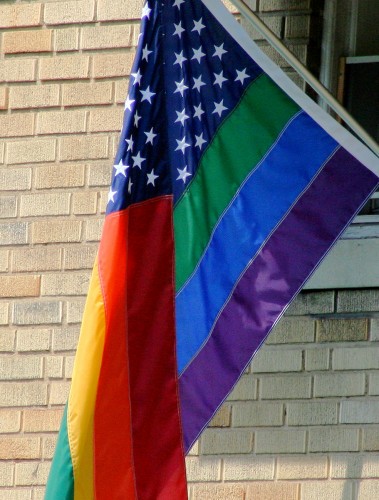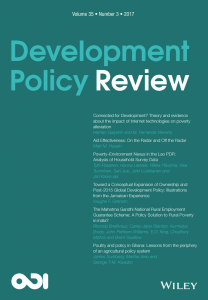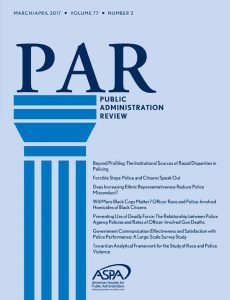Putting the “Homo” in the Organization: Making the Case for Expanding Concepts of Normativity (Part 1)
 It is that time of year when theses, dissertations, and proposals are being prepared for defense. My thesis intends to examine the scripting of a normative student identity with special attention to sexuality in study abroad orientation programs. Only, when it came to prepare my literature review, it came as a shock to me that there is little discussion of homonormativity in education, let alone a conceptualization of homonormativity and organizations more generally. In a world where non-heterosexual identified individuals are increasingly visible, included, and accepted, we need to consider how this is happening and what are the implications, consequences, and stipulations.
It is that time of year when theses, dissertations, and proposals are being prepared for defense. My thesis intends to examine the scripting of a normative student identity with special attention to sexuality in study abroad orientation programs. Only, when it came to prepare my literature review, it came as a shock to me that there is little discussion of homonormativity in education, let alone a conceptualization of homonormativity and organizations more generally. In a world where non-heterosexual identified individuals are increasingly visible, included, and accepted, we need to consider how this is happening and what are the implications, consequences, and stipulations.
But wait, first, what homonormativity? Why hasn’t anyone talked about this?
Duggan (2002:172) defines the “(new) homonormativity,” as “politics that [do] not contest heteronormative assumptions and institutions, but upholds and sustains them, while promising the possibility of a demobilized gay constituency, and gay culture anchored in domesticity and consumption.” Recently, there has been an increasing visibility and extension of particular rights and inclusion to the LGBT community such as same-sex marriage. These sexual rights, Duggan (2002) continues, are only extended to certain LGB individuals, however, “on the condition that every other key aspect of the gay self exhibits what would be considered ‘normal’ gender, sexual, familial, work, and national practices” in order to strengthen heteronormative hegemony and social boundaries of acceptability (Seidman 2010:324). In other words, lesbian, gay, and bisexual individuals are included within the pre-existing heteronormative framework, rather than a new framework that is all-encompassing and inclusive (Duggan 2002; Seidman 2010), thus establishing a homonormativity. This affects not only marital arrangements so that same-sex couples may marry (but still must only be between two individuals), but also other forms of comportment including gender roles and performance, sexual practices, family arrangements, consumption, travel, and work organizations.
While there is a plethora of research that examines gendered, racialized, classed, and heteronormative organizations that structurally excludes sexual diversity, the literature overlooks this recent “inclusive” shift of homonormativity. Yet, utilizing concepts these concepts, we can begin to make the case for homonormative organizations.
In 1990, Joan Acker reconceptualized organizational theory by claiming that organizational structure is not gender neutral: the ways organizations function and are structured, rather than their mere characteristics, are an iterative process that both reflect and helps construct gender roles. For example, a “job” is an abstract category that has no body, no human occupant, with no gender or sexuality and no outside obligation. As that job is filled, the worker becomes separated from their human existence outside of their job’s role and duties. Males who fill that job have lives that depend on the job, while female workers have outside obligations such as family and childcare. So while the conceptualization of a “job” is presented as gender neutral, it is reality gendered masculine: ‘“A job’ already contains the gender-based division of labor and the separation between the public and the private sphere. The concept of ‘a job’ assumes a particular gendered organization of domestic life and social production” (Acker 1990:149)
Relatedly, the organizational structure is also heteronormative by constructing, reproducing, and valuing certain sexual practices that uphold the heteronormative and gender hierarchy. “Organizational interactions are ‘implicitly structured by sexual preference routinely ascribed to gender identity’” (Hassard et al. 2000:11 qtd in Richardson and Monro 2012:109). As jobs are gendered, certain sexual orientations, preferences, and practices are intertwined in the expectations of that role in order to perpetuate the gendered hierarchy. Sexuality includes a broad array of subjects, each of which are highly ingrained in organizational functioning and workers’ lives, including but not limited to bodily desire, flirting, appearance, sexual behavior, sexual harassment, emotional attraction, and identity (Richardson and Monro 2012). In other words, while all workers are inherently sexual, organizations are also sexual by valuing and policing the boundaries of only certain sexualities.
By conceptualizing the sexual worker to be heterosexual or to be living within a merely exclusive heteronormative framework, research actually reflects and upholds heteronormative exclusion of the queer community. While heteronormativity is a reality, explaining organizations in merely heteronormative terms does not fully explain the lived experiences of the LGBTQ community, as they are increasingly included within the mainstream, however defined by heteronormativity. In the memorable words of Ward and Schneider (2009:435), “Discernment of heteronormativity must include attention to its companion, homonormativity.” How can we conceptualize homonormativity in the organization? How are organizations not only heteronormative, but also homonormative?
Pieces to Read
Acker, Joan. 1990. “Hierarchies, Jobs, Bodies: A Theory of Gendered Organizations.” Gender & Society 4(2):139-58.
Duggan, Lisa. 2002. “The New Homonormativity: The Sexual Politics of Neoliberalism.” Pp. 175-94 in Materializing Democracy: Toward a Revitalized Cultural Politics, edited by R. Castronovo and D. D. Nelson. Durham: Duke University Press.
Seidman, Steven. 2010. “From Identity to Queer Politics: Shifts in Normative Heterosexuality and the Meaning of Citizenship.” Citizenship Studies 5(3):321-28.
Richardson, Diane and Surya Monro. 2012. Sexuality, Equality & Diversity. Hampshire: Palgrave Macmillan.
Ward, Jane and Beth Schneider. 2009. “The Reaches of Heteronormativity: An Introduction.” Gender & Society 23(4):433-39.
Williams, Christine and Patti Giuffre. 2011. “From Organizational Sexuality to Queer Organizations: Research on Homosexuality and the Workplace.” Sociology Compass 5:551-63.



1530-2415/asset/SPSSI_logo_small.jpg?v=1&s=703d32c0889a30426e5264b94ce9ad387c90c2e0)